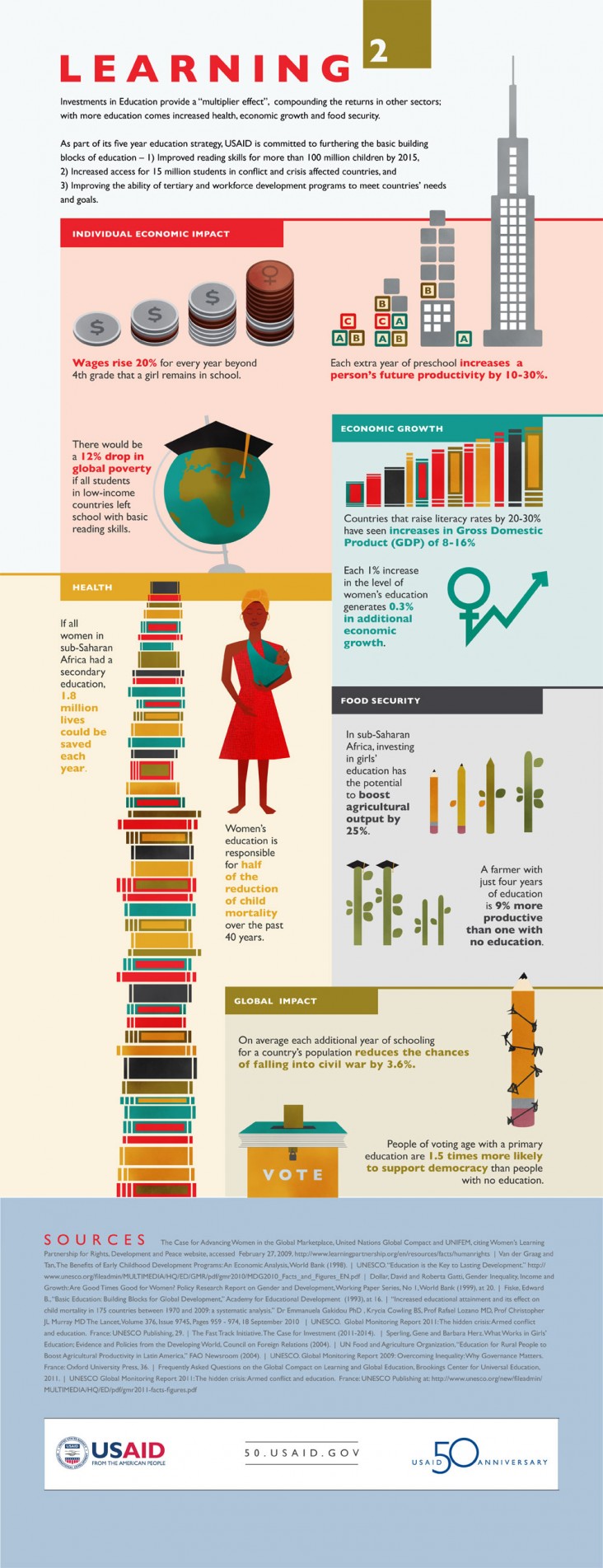Speeches Shim

Investments in Education provide a "multiplier effect", compounding the returns in other sectors; with more education comes increased health, economic growth and food security
As part of its five year education strategy, USAID is committed to furthering the basic building blocks of education - 1) Improved reading skills for more than 100 million children by 2015, 2) Increased access for 15 million students in conflict and crisis affected countries, and 3) Improving the ability of tertiary and workforce development programs to meet countries' needs and goals.
Individual Economic Impact
- Wages rise 20% for every year beyond 4th grade that a girl remains in school.
- There would be a 12% drop in global poverty if all students in low-income countries left school with basic reading skills.
- Each extra year of preschool increases a person's future productivity by 10-30%
Economic Growth
- Countries that raise literacy rates by 20-30% have seen increases in Gross Domestic Product (GDP) of 8 - 16%
- Each 1% increase in the level of women's education generates 0.3% in additional economic growth.
Health
- If all women in sub-Saharan Africa had a secondary education, 1.8 million lives could be saved each year.
- Women's education is responsible for half of the reduction of child mortality over the past 40 years.
Food Security
- In sub-Saharan Africa, investing in girls' education has the potential to boost agricultural output by 25%
- A farmer with just four years of education is 9% more productive than one with no education.
Global Impact
- On average each additional year of schooling for a country's population reduces the chances of falling into civil war by 3.6%
- People of voting age with a primary education are 1.5 times more likely to support democracy than people with no education.

Comment
Make a general inquiry or suggest an improvement.